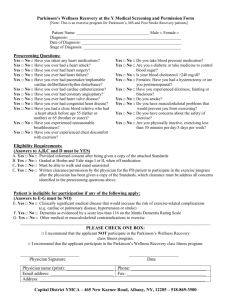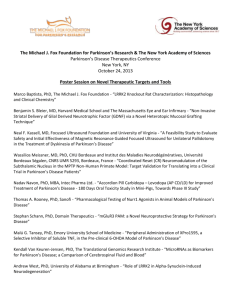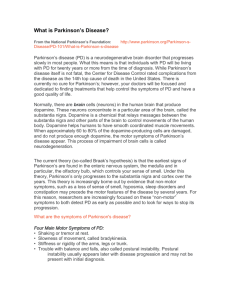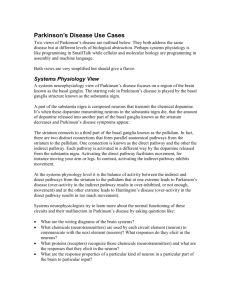What are Okazaki Fragments
advertisement
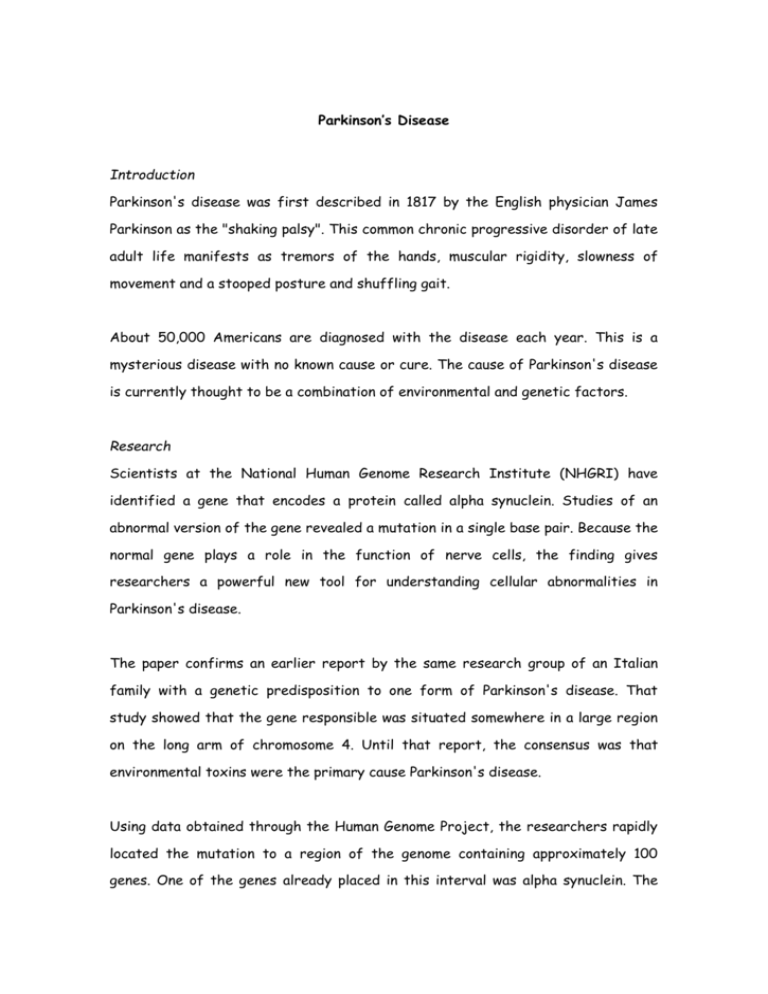
Parkinson’s Disease Introduction Parkinson's disease was first described in 1817 by the English physician James Parkinson as the "shaking palsy". This common chronic progressive disorder of late adult life manifests as tremors of the hands, muscular rigidity, slowness of movement and a stooped posture and shuffling gait. About 50,000 Americans are diagnosed with the disease each year. This is a mysterious disease with no known cause or cure. The cause of Parkinson's disease is currently thought to be a combination of environmental and genetic factors. Research Scientists at the National Human Genome Research Institute (NHGRI) have identified a gene that encodes a protein called alpha synuclein. Studies of an abnormal version of the gene revealed a mutation in a single base pair. Because the normal gene plays a role in the function of nerve cells, the finding gives researchers a powerful new tool for understanding cellular abnormalities in Parkinson's disease. The paper confirms an earlier report by the same research group of an Italian family with a genetic predisposition to one form of Parkinson's disease. That study showed that the gene responsible was situated somewhere in a large region on the long arm of chromosome 4. Until that report, the consensus was that environmental toxins were the primary cause Parkinson's disease. Using data obtained through the Human Genome Project, the researchers rapidly located the mutation to a region of the genome containing approximately 100 genes. One of the genes already placed in this interval was alpha synuclein. The alpha synuclein gene was an excellent candidate for being a Parkinson's disease gene because previous research had already shown that the amyloid plaques of Alzheimer's disease patients contained fragments of the alpha synuclein protein. Considering its potential role in neurodegenerative disease, the researchers began looking at the precise sequence of alpha synuclein in normal and affected individuals. In the Italian family and three of the Greek families, the Parkinson's patients were found to possess an identical mutation in a single base pair of the alpha synuclein gene. Deposits in the brain called Lewy bodies distinguish Parkinson’s disease. The researchers hypothesize the mutation in the synuclein protein causes it to aggregate, thus attracting other proteins to form a deposit that damages the cell. A similar mechanism has been proposed for the production of amyloid plaques in Alzheimer's disease. The finding that Alzheimer's disease plaques contain a fragment of alpha synuclein further strengthens the idea that a common mechanism may be operating in both of these neurodegenerative diseases. The NHGRI researchers believe that the abnormal gene is responsible for a significant portion of familial Parkinson's disease with onset generally before the age of 60. It remains to be seen whether these alterations will also be involved in other forms of the disease with later onset and less familial history. The researchers are now looking at related synuclein genes among patients with a familial history of Parkinson's disease but no defect in the alpha synuclein gene. Homework done by: Camilo Mancera Arias

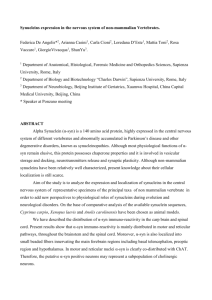

![Anti-alpha Synuclein (phospho S129) antibody [MJF- R13 (8-8)] ab168381](http://s2.studylib.net/store/data/012624200_1-8b4d3beea2c25d88fba831182bf6deb7-300x300.png)

